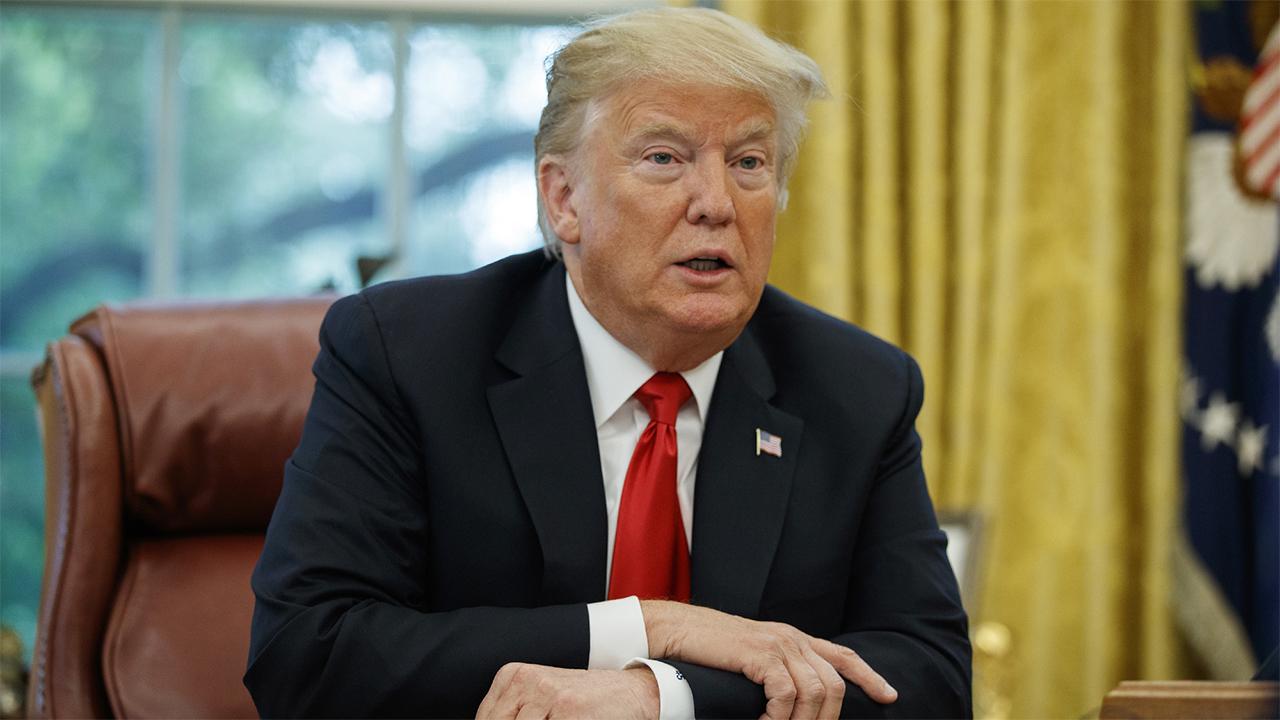State of the Union by the numbers: A look at the Trump economy in its second year
As Donald Trump heads into his third year as president, he’s preparing to deliver his second State of the Union address on the heels of a year riddled by market volatility, a bipartisan funding feud and a tit-for-tat trade battle with China.
In the nearly one-year period since Trump declared the State of the Union “strong,” he’s touted the strength of the economy, job creation and a record-low unemployment rate, even as jitters about slowing global growth emerge.
FOX Business takes an in-depth look at how the economy has fared since the last State of the Union speech -- and before Trump offers his own assessment Tuesday night.
Stock market: As of Monday’s close, the Dow Jones Industrial Average is down 3.2 percent from when he gave his last State of the Union address on Jan. 30. The Dow closed at 26,076.89 on that day, compared to 25,239.37 on Monday. That same year, the Dow set 71 new records at the closing bell, making it the best one-year performance for the blue-chip index.
Trump took a moment last week, however, to applaud the Dow, which just had the strongest performance in more than 30 years.
The broader S&P 500 -- which also mounted a record run during Trump’s first year in office -- fell about 3.5 percent during his second year, while the tech-heavy Nasdaq Composite fell about 0.7 percent.
Unemployment: Fewer people are actively seeking employment compared to the year-ago period. In January of 2018, the unemployment rate was at 4.1 percent -- at the time, it was the lowest rate in more than 17 years.
Over the course of the year, unemployment ticked down slightly to 3.7 percent, the lowest rate in nearly five decades. It remained steady for several months, before rising slightly. As of January, unemployment was at 4 percent.
Jobs: In January, the Department of Labor revealed that the U.S. economy added 2.63 million jobs in 2018, the highest number since 2015.
Comparatively, in 2017, during Trump’s first year in the Oval Office, the economy added about 2.18 million jobs.
National debt: The U.S. deficit -- which is already at a six-year high and a nearly 17 percent increase from the year-ago period -- could climb as high as $1 trillion by the end of 2019, according to the Committee for a Responsible Federal Budget.
CLICK HERE TO GET THE FOX BUSINESS APP
In October, the U.S. Treasury Department released the nation’s monthly bank statement, revealing a deficit of $779 million. The national debt, meanwhile, has skyrocketed to more than $21.6 trillion.
Some experts attribute the rise in deficit to the passage of the 2017 Tax Cuts and Jobs Act, the largest overhaul of the U.S. tax code since Ronald Reagan occupied the Oval Office. The sweeping legislation -- perhaps the biggest accomplishment so far of the Trump administration -- slashed the corporate tax rate to 21 percent from 35 percent and temporarily reduced individual taxes. If the cuts remain in place, the deficit could climb above $2 trillion within the next decade, the CRFB noted.




















